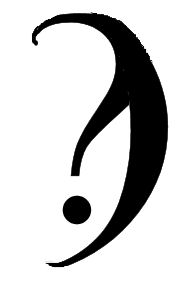In my old blog entry #695, I presented a new version
of a sonnet I’d long been trying to write for Dylan
Thomas, another failure. In my next two entries I
had much better sonnets, all by Mike Snider, which I
commented on:
28 December 2005: Several weeks ago, my sometime
poetics foe at New-Poetry, Mike Snider, was kind
enough to send me a (signed!) copy of his chapbook,
44 Sonnets. Its first poem is this:
.
Petulant Muse
Another Sonnet? Baby, have a heart…
Try something multi-culti — a ghazal! –
Or let me really strut my stuff and start
An epic — Sing! Muse — oh, we’ll have a ball!
You’ll be important when we’ve finished it –
Just think — your name on Stanley Fish’s lips,
Our poem tausht in Contemporary Lit,
The fame of Billy Collins in eclipse!
And talk about commitment! I’ll be yours
For years! If we get stale, then, what the fuck?
My sister Callie knows some kinky cures
For boredom. You should see … no, that would suck.
Just fourteen lines, and then I get to rest?
I think our old arrangement’s still the best.
.
I’d call this a serious light poem. By that I mean it’s clever
and fun and funny, but intelligent, with some involvement
with consequential Artists’ Concerns. In any event, I love
the consistent tone and the way it dances intellectuality
and academicism into its mix with its references to Fish,
the ghazal (Arabic poem with from 5 to 12 couplets, all
using the–good grief–same rhyme) and to Calliope, the
muse of epic poetry, the Internet just told me (the narrator
I would guess to be Thalia, the muse of comedy and of
playful and idyllic poetry). It feels like a painting of Fragonard
to me, which I mean as a compliment.
29 December 2005: Here are three more sonnets from Mike
Snider”s chap, 44 Sonnets:
.
The Fall
When we’d pile in my great-aunt’s Chevrolet
And drive to see the trees turned red and gold,
Grandma would scowl. “Reminds me of death,” she’d say.
“It means that everything is getting old.”
“Now, Helen, ‘ after winter comes the spring.’”
But she’d have none of that. “It came and went
For you and me, Sister.” And then she’d sing
“Go, tell Aunt Rhody,” just for devilment.
I have her picture, nineteen, sure to break
The heart of every man she ever met –
Another from her fifties, in a fake
Nun’s habit sucking on a cigarette,
And both are faithful. Grandma, you were right.
There’s nothing grows in Fall except the night.
.
Homework
My daughter’s learning how the planets dance,
How curtseys to an unseen partner’s bow
Are clues that tell an ardent watcher how
To find new worlds in heaven’s bleak expanse,
How even flaws in this numerical romance
Are fruitful: patient thought and work allow
Mistake to marry meaning. She writes now
That Tombaugh spotting Pluto wasn’t chance.
Beside her, I write, too. Should I do more
Than nudge her at her homework while I try
To master patterns made so long before
My birth that stars since then have left the sky?
I’ll never know. But what I try to teach
Is trying. She may grasp what I can’t reach.
.
What I know
Always, always, always, I know this first–
My dearest girl is gone, my daughter Lee
I loved not well enough to keep with me–
Of all the things I’ve failed to do, the worst.
Her poet mother’s supple brain was cursed
To learn the language of pathology.
When surgery failed they turned to drugs and she
Began to dream of torture, dreams she nursed
To memories of children murdered by
Her fathers and her mother and her will.
I could not hold her to the truth. She found
At Duke a doctor who decided I
Was fondling Lee. The judge said no, but still
She took my Lee and held her underground.
.
I posted these on the date of this entry, then wrote
over the entry, so lost it. I seem to do something like
that every three or four months, I don’t know why.
The remarks I lost were penetrating, I’m sure, but I
remember them only vaguely. One thing I remember
is marveling at how smoothly well these poems (and
the rest of Snider’s poems in his book) carry out the
aims of Iowa plaintext lyrics–but employing rhymes
(note, for example the abbaabba of the last one’s
octave!) and fairly strict meter. Ergo, they deal
sensitively with common human situations and end in
effective epiphanies, all more or less conversationally–
but with the plus of the significantly extra verbal
music that meter and rhyme can provide.
One value of being forced to re-type, and re-consider
a poem one is critiquing, as I’ve had to do with these,
is that it can sometimes lead to an improved interpretation.
That’s what happened to me just now. For who knows
what reason, I didn’t realize that the persona of the poem
was writing poetry, so had him working on astronomy. So
I missed the wonderfully fertile juxtaphor (implict metaphor)
of writing verse for astronomy (and the ones of either for
doing homework, or learning in general). And of poems for
the sky-charts–explained sky-charts–of astronomy. All
this along with the now stronger explicit comparison of the
father’s work toward mastery of poetry with his daughter’s
toward mastery of schoolwork, and the simple, conventional,
but not pushy moral of the poem, “trying is what counts.”
Consequently, I now count this poem a masterpiece; the
others are “only” good solid efforts. Good brief character
studies, too.
In my lost comments, I mentioned the value of formal
verse to its engagents for finding an order for life’s
difficulties–and suggesting that they, like similar difficulties
timelessly made into similar art, will pass. I also referred
to the pleasure an engagent of a sonnet or other piece
of formal verse, when effective, will get from the poet’s
dexterity–like someone listening to a fine pianist playing
Rachmaninoff, say, getting both musical pleasure, and a
kind of (voyeuristic, sub-behavioral kinesthetic) pleasure
from his physical skill at the keyboard. I’m sure I came up
with a somewhat origianl third value, but now I can’t
remember what it was. No doubt, it will become famous
as Grumman’s lost insight the way Fermat’s lost proof did.









“certain kinds of semantically meaningless texts that somehow act like language are a form of visual poetry.”
what’s wrong with that?
actually, id be more interested in a report of marton’s presentation during his stay in this country.
As you ought to know by now, Nico, I have this absurd idea that poetry is a literary art, and therefore must have a semantic meaning. But I might have to accept certain kinds of “semantically meaningless texts that somehow act like language are a form of visual poetry” as poetry if there’s no other category for it. If it does something aesthetically interesting visually, then I’d call it “visimagery,” my word for visual art. If it is strictly textual but averbal, then, perhaps, “asemic poetry” would be the proper category for it. Justified by its having “near-words”–and having to have some category.
As for what I put in my blog, there’s a lot of stuff I’d like to see in it but am habitually too tired to post. I should be up to saying more about my day with Marton (and Clark) eventually, but not about Marton’s presentation, because I could only afford to stay a day, so missed it. It may have been recorded, though. By now he has probably given a second presentation in Chicago. His tour includes a third city–Milwaukee, I think. Anyway, he’ll be meeting Karl Young.
–Bob
–Bob
i know i stepped in your definition field, but wouldnt a “foreign” language be considered meaningless to someone without the semantic keys. though, of course, it would still be language.
im glad to hear marton’s visiting mr young..
thanks,
n
My impulse was to joke that all poems have to be in English. But in a way, that’s true: a poem is FOR ITS ENGAGENT a collection of wrods (and perhaps other elements) that he can read. A text in Spanish is not a poem for me, but can certainly be one for a person who speaks Spanish. Just as a painting can be a work of art for someone who can see but not for someone who is blind.
I maintain that everything has a personal definition and social definition. For me, a poem has to be in English. For the world, a poem has to be in some language more than one person can read.
It reduces to the silly philosophical question about whether real things exist where no conscious mind can witness them. I say they do simply because it’s easier to think things are stable, and don’t disappear when no one is looking at them. But the latter could happen. It doesn’t matter, though. Existence stays exactly the same regardless of what happens.
–Bob